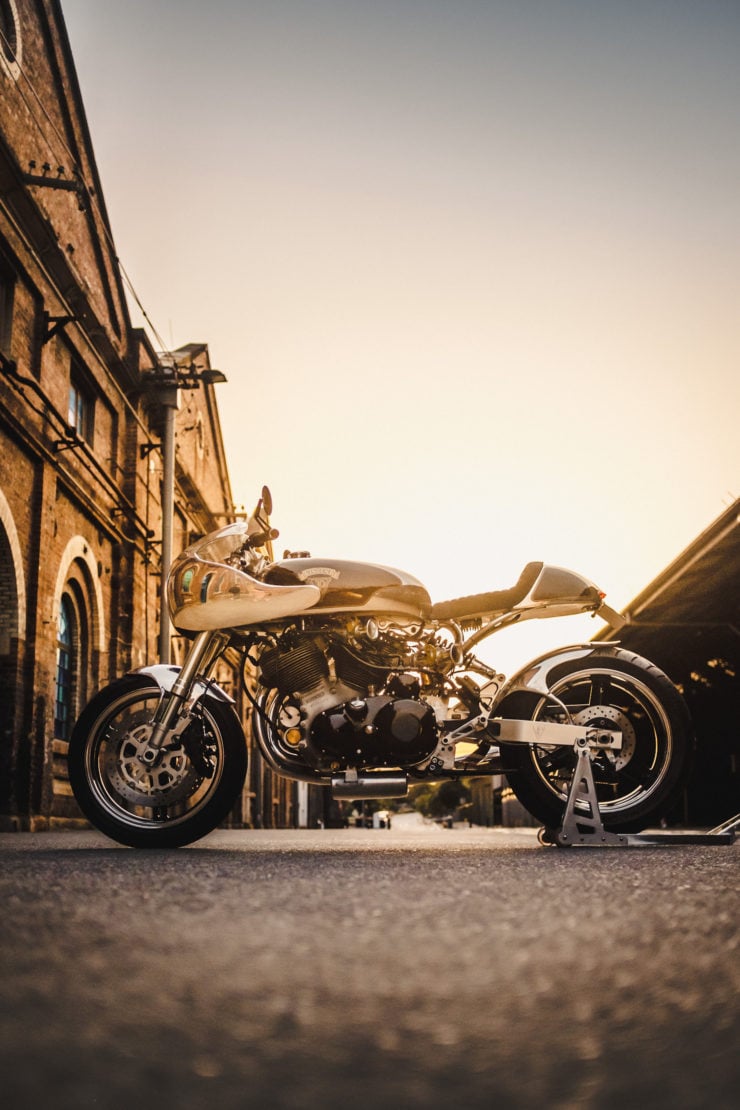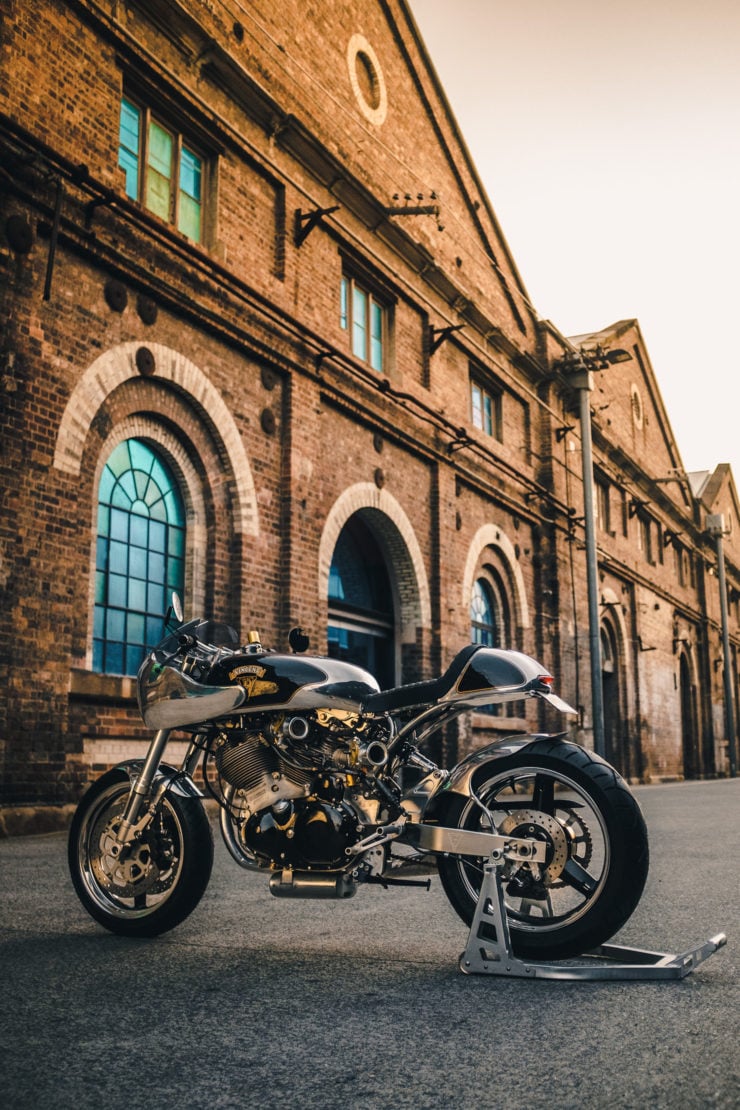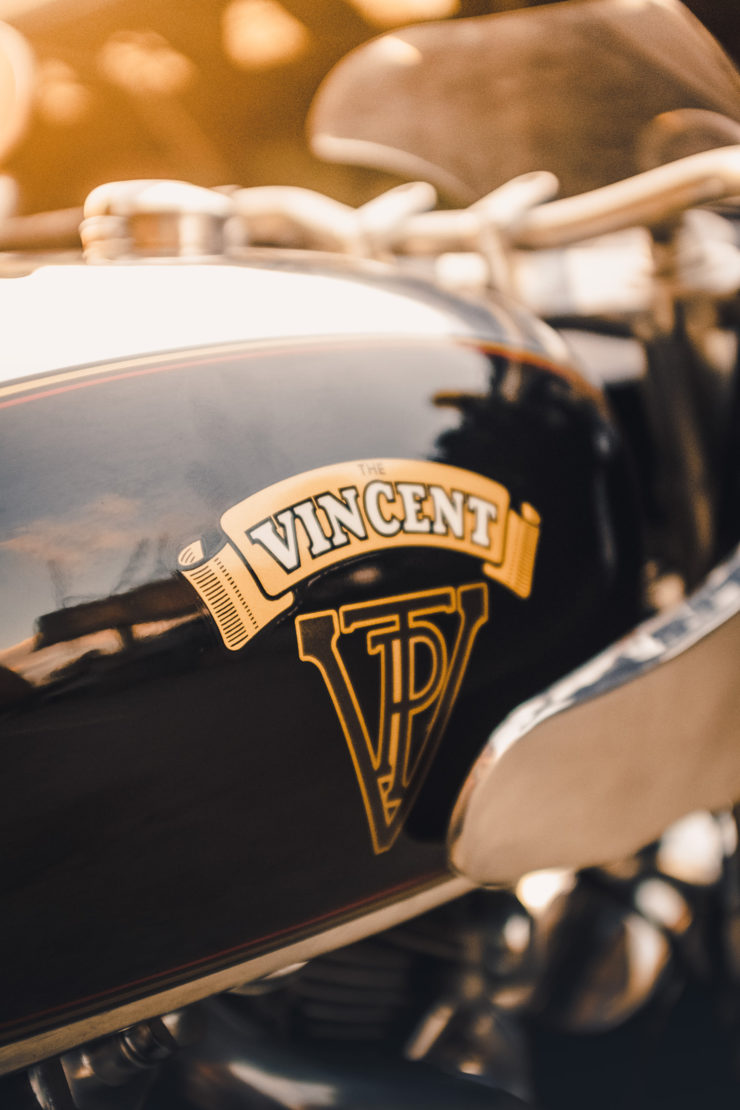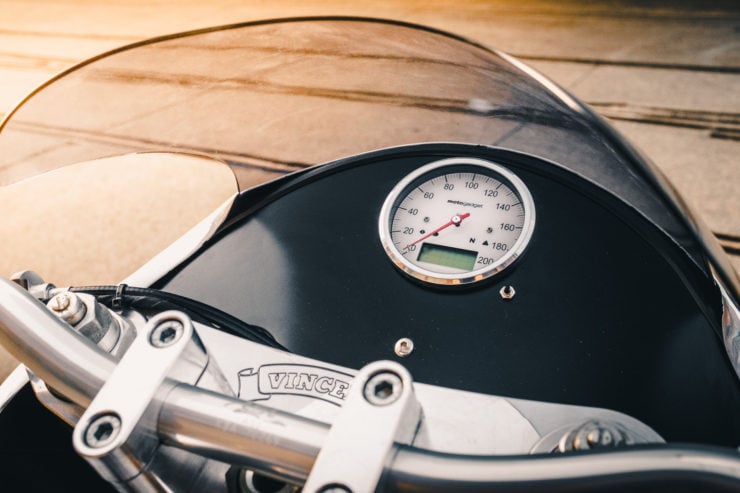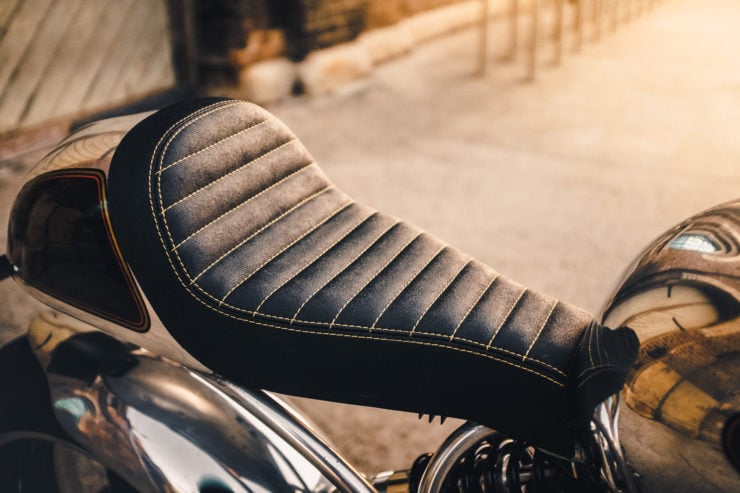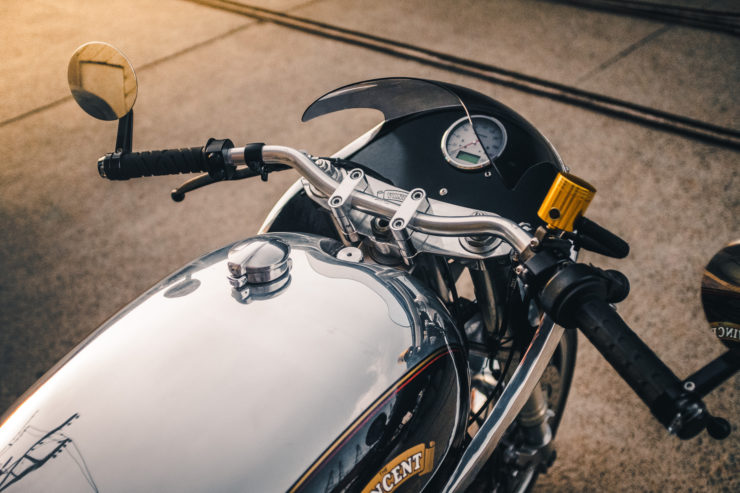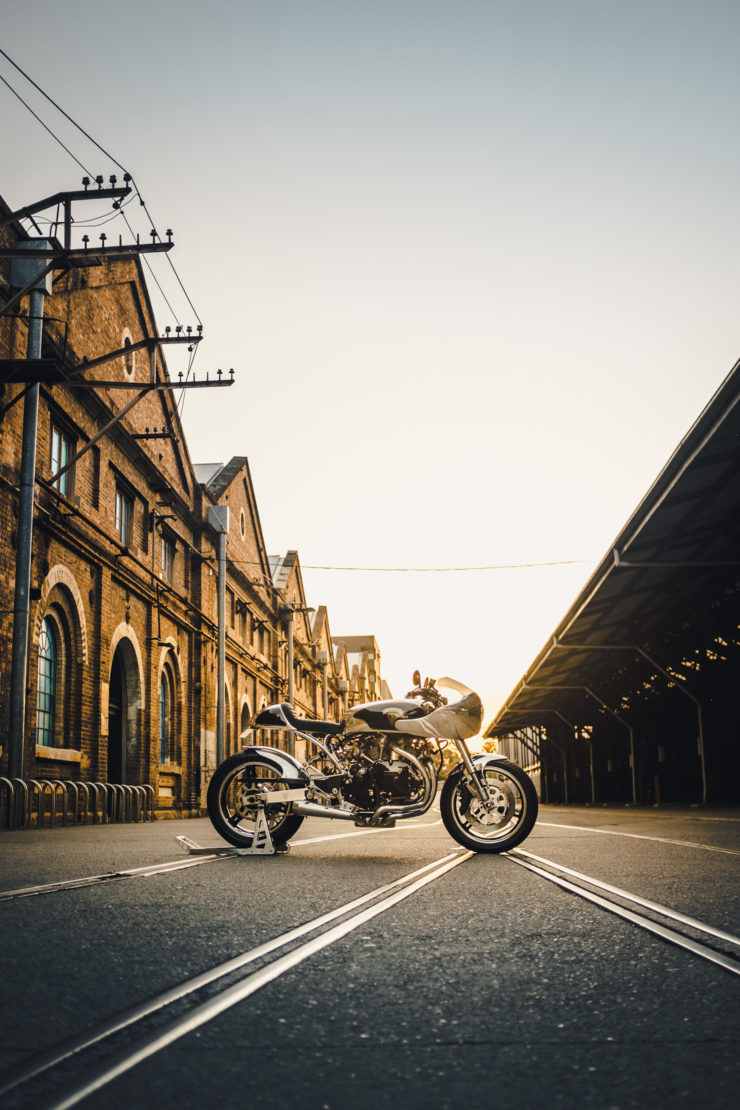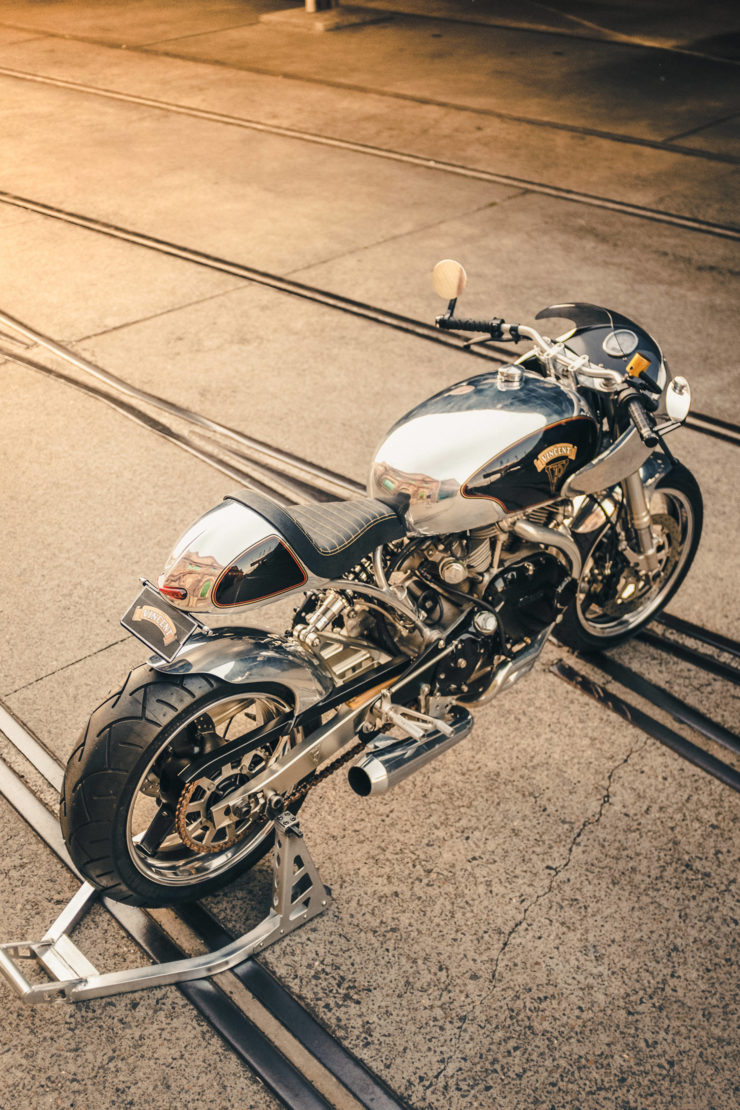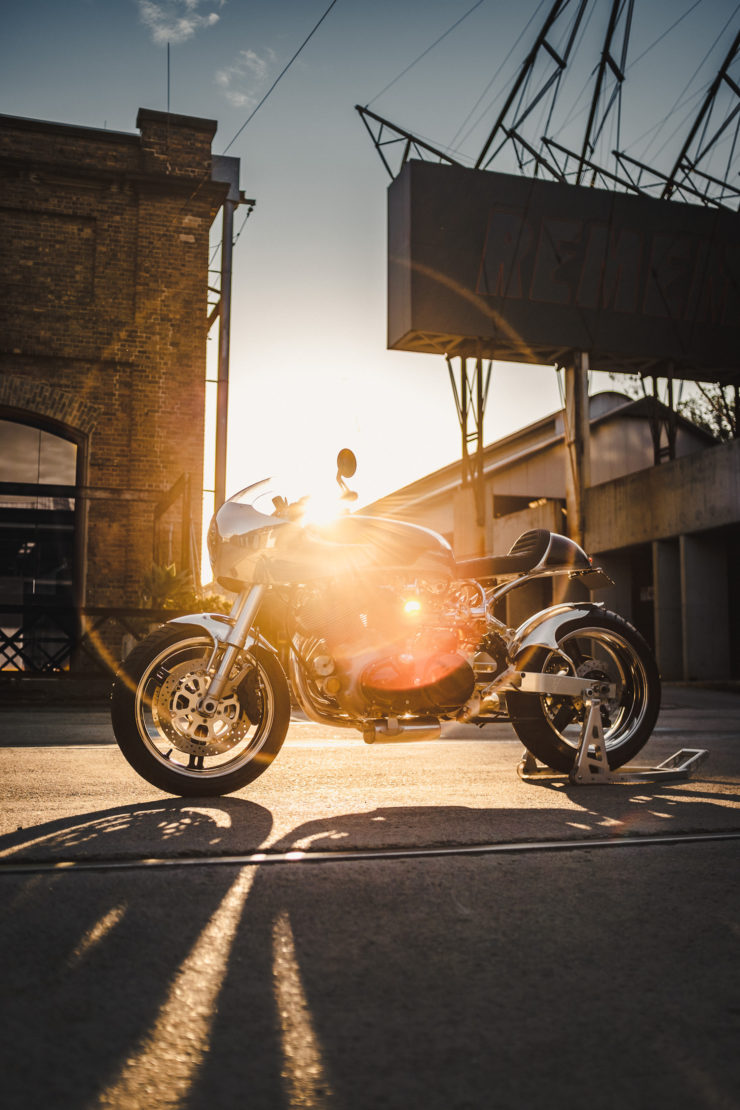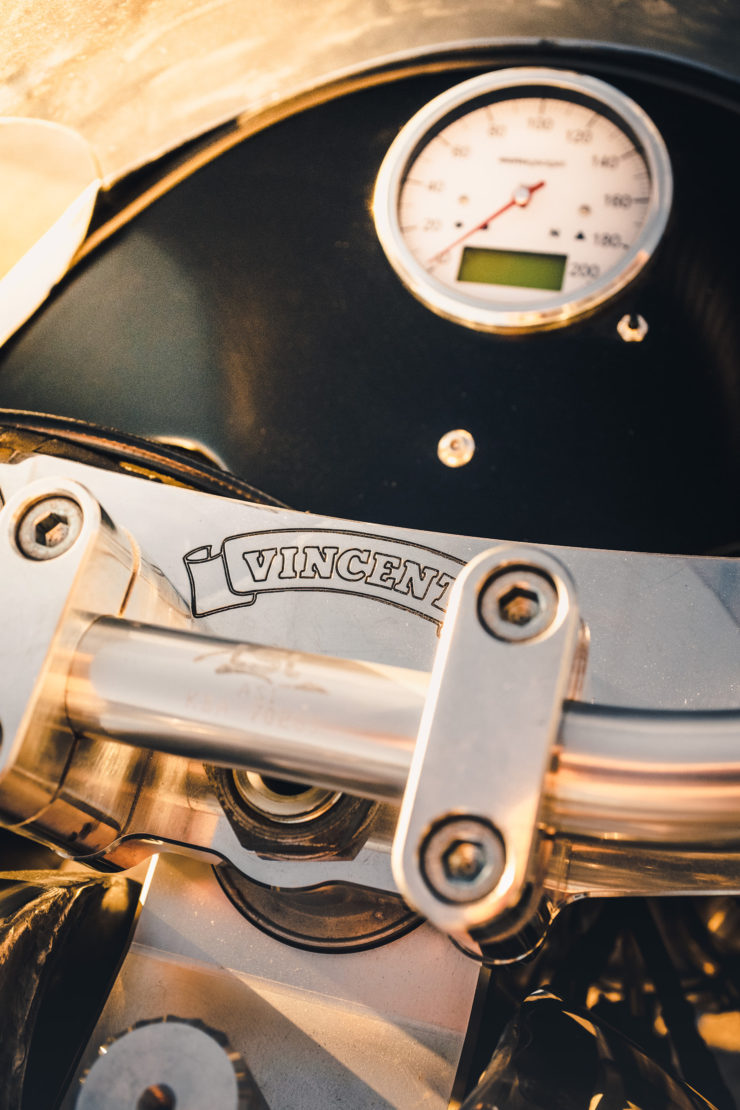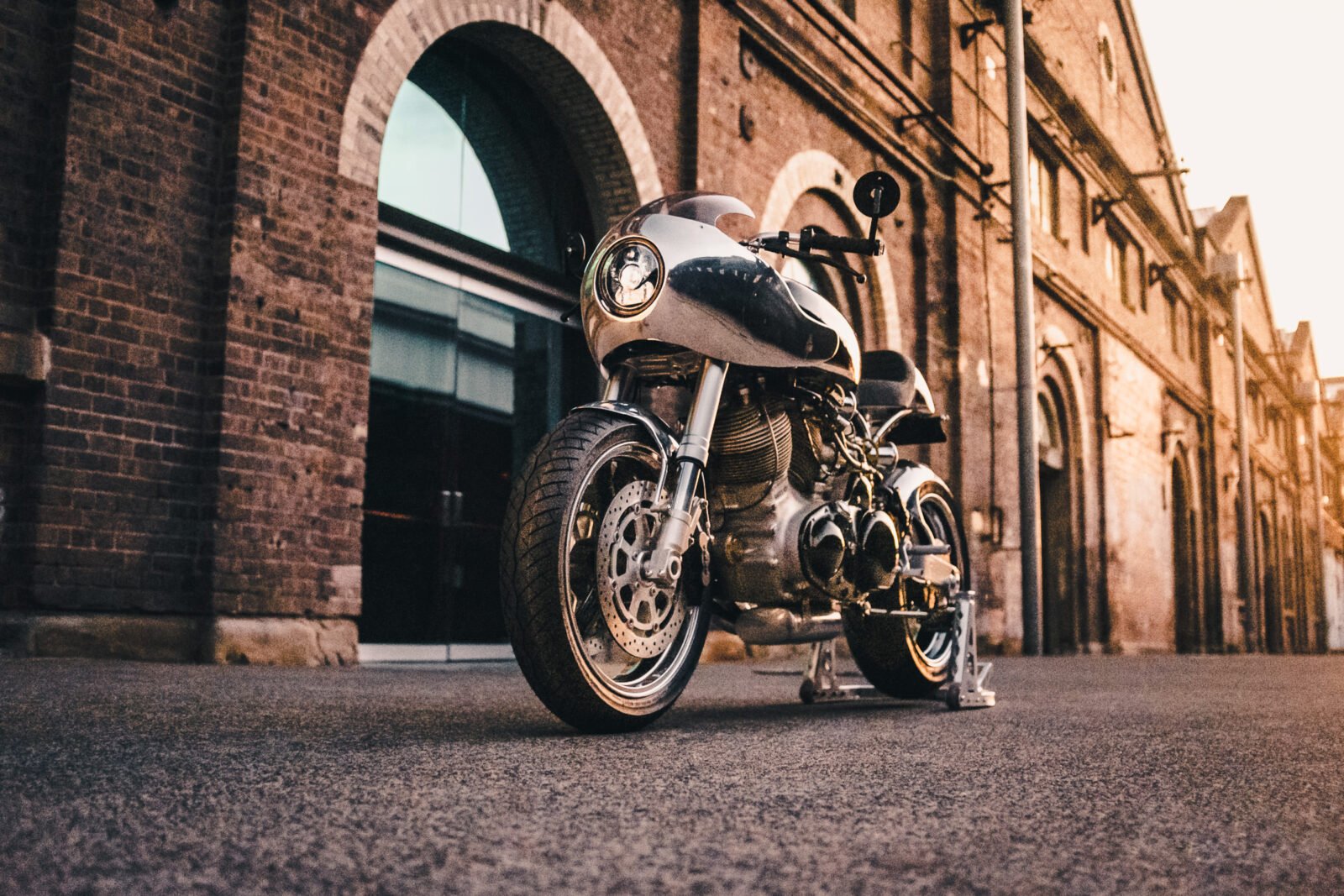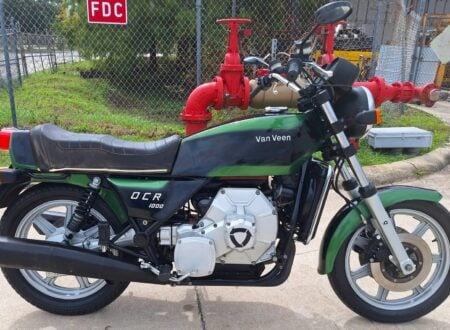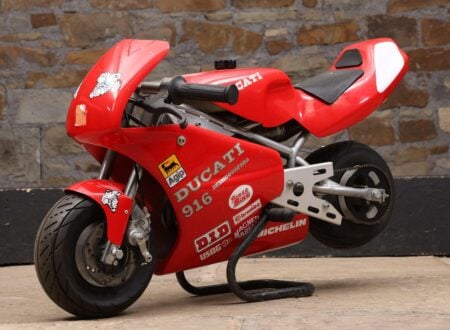The Vincent Black Shadow is one of few motorcycles that can truthfully claim to be powered by an engine designed by a man who would go on to design a Formula 1 World Championship winning V8 – the Repco 620 series engine that would defeat engines built by Ferrari, Maserati, BRM, Ford, Climax, Weslake, Cosworth, Honda, and Serenissima.
Although we think of the Vincent Black Shadow as a thoroughly British motorcycle it actually owes its existence to an Australian man named Phil Irving. Irving was an engineering genius who developed the V-twin used in the Black Shadow, as well as a number of other Vincent engines, and it was because of him that Vincents were the fastest production motorcycles in the world in the immediate post-WW2 years.
This tradition of world class Australian engineering is what inspired fellow antipodean Simon Leake to develop a brand new Vincent Black Shadow for the 21st century. Leake had a lifelong fascination with Vincents thanks to exposure early in childhood but his dream to build a truly modern Black Shadow had to wait decades until the demands of life abated enough for him to embark on what would become an expansive project.
Building a modern Vincent Black Shadow would require a global effort – a newly built Vincent V-twin and racing gearbox was sourced from JMC Classics in the UK, the engine was fitted with special twin-spark 600cc heads with enlarged valve heads and improved finning from Australian Terry Prince of Classic Motorbikes (TPV). The total swept capacity of the new engine is 1200cc, 202cc larger than the original Black Shadow V-twin.
A new electronic fuel injection system was developed for the bike, purists often decry the replacement of carburettors with EFI however the purpose of this build was to create a Vincent for 2020 not 1948, and so the use of a modern EFI system was seen as a must for the sake of both performance and reliability.
A new EFI/EMU system was created with additional Motogadget components, a Pazon twin spark ignition, a set of throttle bodies from Racing Hardware Developments were fitted and a two-into-one exhaust with an under-sump silencer was by sourced from Hitech Mufflers. In full performance mode the engine now produces 115 bhp, with 90 bhp available in road trim for day to day use.
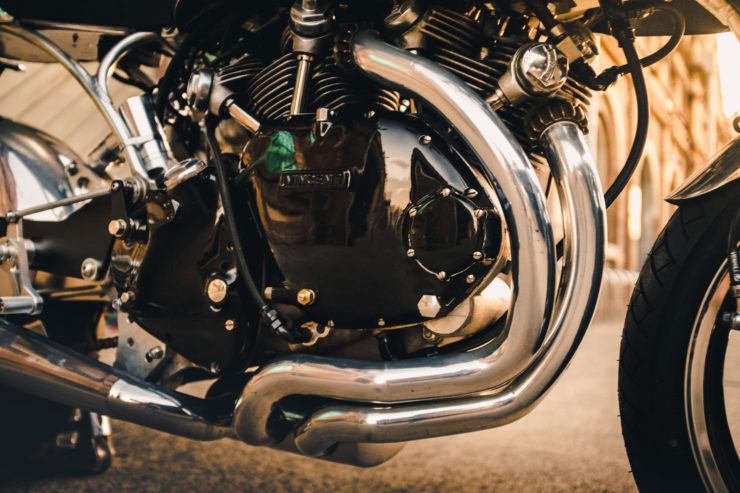
It would be Terry Prince who supplied the CNC milled aluminum-alloy backbone frame and the alloy swing arm. The frame also contains the oil and it joins the steering head over the top of the engine to the top of the monoshock, using the engine itself a stressed member.
The original Black Shadow used this same design which was decades ahead of its time, however it needed further development to reach its true potential – development that was largely pioneered by Swiss motorcycle racer Fritz Egli then continued by the likes of Patrick Godet and Terry Prince among others.
This new backbone frame and swing arm was paired with modern suspension and brakes specifically to address the concerns raised by Hunter S. Thompson (quote below). Leake used a set of modern upside down forks up front which were sourced from a Suzuki GSX-R, these were kept complete with Suzuki-sourced wheels and brakes – giving the Vincent twin six-piston Tokico callipers and floating discs up front, with a matching single disc in the rear.
“If you rode the Black Shadow at top speed for any length of time, you would almost certainly die. That is why there are not many life members of the Vincent Black Shadow Society.” – Hunter S. Thompson
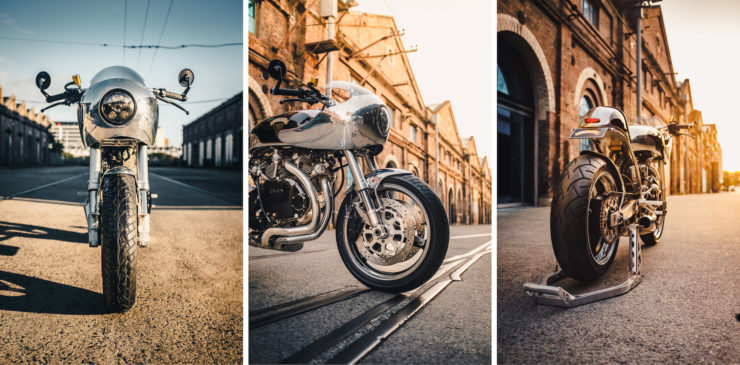
It’s difficult to nail down which feature on the bike is the most eye-catching but a key contender would have to be the stunning hand-shaped alloy – the fuel tank, seat cowl, subframe, front fairing, and fenders were all shaped by Vaughan Ryan, Georgio Rimi, and Gary Vincent of MotorRetro in Sydney. The fairing took three design prototypes before a final half-fairing shape was chosen and all of it was completed using traditional English wheeling machines, bucks, and hammers – just as it would have been in the 1940s.
Looking at the completed bike it’s difficult not to wonder what members of the unofficial Vincent Black Shadow association would make of it – men like Rollie Free, Hunter S. Thompson, Phil Vincent, and of course, Phil Irving. Given the use of a classic though fully reworked Vincent V-twin coupled with traditional alloy bodywork which is mated to a modern frame, suspension, and brakes, it’s hard not to see them all loving it.
In fact the key challenge would probably be stopping Thompson from crashing it as he yelled something incoherent about a Sausage Creature.
If you’d like to see more you can read the story of the bike in the words of Simon Leake himself here. Special thanks to MotorRetro – Terry Prince Vincent – Stories of Bike.
Images courtesy of Andrew Jones from Machines That Dream ©2020.
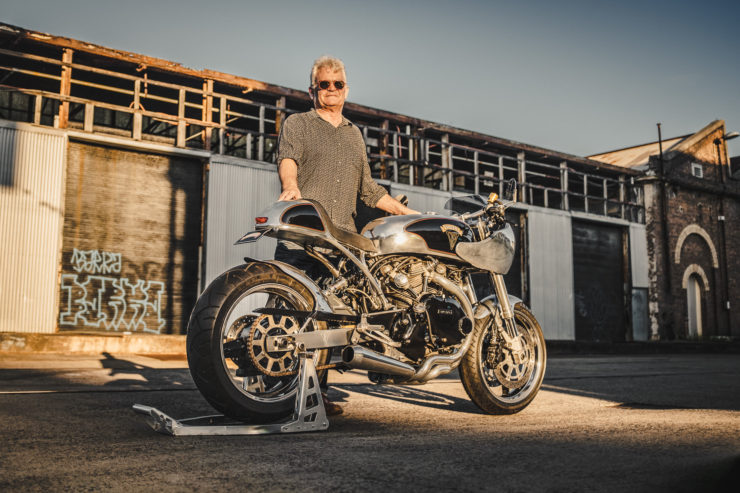
Above Image: Simon Leake with the 21st Century Vincent Black Shadow in Sydney, Australia.
– Post Script –
No mention of the Vincent Black Shadow can be made without mentioning that it was a lifelong favourite of Hunter S. Thompson – the bike made such an impression on him he included references to it in some of his books including Fear and Loathing in Las Vegas, Fear and Loathing: On the Campaign Trail ’72, and of course in his famous article Song of the Sausage Creature featured in Cycle World Magazine in March 1995.
Fear and Loathing in Las Vegas: A Savage Journey to the Heart of the American Dream (1970)
- An excerpt: At the Polo Lounge in Beverly Hills, planning to cover the Mint 400 Desert Race in Las Vegas.
“Well,” he said, “as your attorney I advise you to buy a motorcycle. How else can you cover a thing like this righteously?”
“No way,” I said. “Where can we get hold of a Vincent Black Shadow?”
“Whats that?”
“A fantastic bike,” I said. “The new model is something like two thousand cubic inches, developing two hundred brake-horsepower at four thousand revolutions per minute on a magnesium frame with two styrofoam seats and a total curb weight of exactly two hundred pounds.”
“That sounds about right for this gig,” he said.
“It is,” I assured him. “The fucker’s not much for turning, but it’s pure hell on the straightaway. It’ll outrun the F-111 until takeoff.”
“Takeoff?” he said. “Can we handle that much torque?”
“Absolutely,” I said. “I’ll call New York for some cash.”

